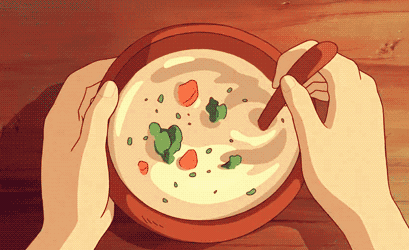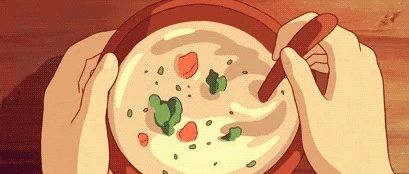
In Traditional Chinese Medicine (TCM), there is a saying that “food and medicine share the same source.” The medicinal properties of the five grains can be used to prevent and treat diseases, are economical and practical, and have no side effects.
1. Rice Nourishes the Lungs Rice includes varieties such as white rice and black rice. It has excellent nourishing and moistening effects on the lungs, especially when symptoms like lung heat and cough occur. Preparation: Cook rice porridge over low heat until the rice soup thickens. Drink only the rice soup without the rice grains, and it can be consumed at any time.
2. Soybeans Nourish the Kidneys Black soybeans are known as the “grain of the kidneys.” TCM believes they have the effects of tonifying the kidneys, strengthening the body, detoxifying, and moisturizing the skin, making them beneficial for kidney deficiency and edema. Preparation: Soak and blend into soy milk, or cook black soybean porridge, consuming it once in the morning and once in the evening.
3. Millet Nourishes the Spleen Millet is considered the top of the five grains and is known to strengthen the spleen and benefit the stomach. For those with spleen deficiency and weakness, millet is an excellent tonic that can boost energy and promote longevity. Preparation: Cook a pot of millet porridge, skim off the essence (millet oil) from the top with a spoon, and drink it on an empty stomach. It has excellent effects on nourishing the spleen and stomach and can be consumed morning and evening.
4. Sorghum Nourishes the Liver Sorghum, along with soybeans, is an essential grain. It has the effects of nourishing the liver, benefiting the stomach, and stopping diarrhea. It is particularly effective for those suffering from chronic diarrhea, showing good results after prolonged consumption. Preparation: Process sorghum into flour, cook it with water to make a thin paste, and consume it before meals in the morning and evening.
5. Wheat Nourishes the Heart Wheat is known as the “noble grain.” TCM believes it can nourish the heart, calm the spirit, and alleviate irritability and dryness. It is beneficial for alleviating symptoms of menopause, spontaneous sweating, and irritability in women. Preparation: Cook whole wheat with the husk into porridge, or buy floating wheat from a Chinese medicine shop to brew water, consuming it three times a day.
How to Eat Best?

As the foundation of the dietary pyramid, the five grains are the best basic food and the cheapest source of energy. Adults should consume 250-400 grams of grains daily to help prevent related chronic diseases. Each type of grain has its optimal way of consumption to maximize its nutritional benefits.1Sorghum is Suitable for Snacks
“Red Sorghum” has given a generation a unique sentiment towards the plateau, but many may not realize that this “coarse” food is best suited for making snacks.
Sorghum porridge or rice can seem a bit coarse, but when ground into flour for snacks, it becomes much finer. Sorghum flour is best used to make a snack called sorghum cake, which involves grinding sorghum into flour, adding baking powder, sugar, eggs, and enough water to form a sticky dough, flattening it, steaming it, and then lightly frying it in oil and sprinkling sesame seeds on top.
Sorghum cake may be hard to digest for those with slightly poor gastrointestinal function; one can try making sorghum soup by adding a little sorghum when making white fungus soup or corn soup, enhancing the already nutritious soup with a richer texture.
2Growing Bodies Should Eat Buckwheat Noodles
Buckwheat noodles are made from a gray-black flour that may not look appealing but is highly nutritious. Buckwheat can be prepared in various ways, but the most common is as noodles. Buckwheat has a higher protein content than rice and flour, making it especially suitable for growing children, as the lysine and arginine in it can significantly enhance children’s growth and intelligence. However, parents should be mindful of a few things when preparing buckwheat noodles for their children.
The best pairing for buckwheat noodles is to mix them with minced meat and cucumber for a cold dish. Buckwheat is cooling and can harm the stomach, so it should be soaked longer until soft for better texture and easier digestion. Cucumber adds a refreshing touch, while minced lamb is a good match as it warms and nourishes the stomach.
Buckwheat is best suited for the elderly and children. Occasional consumption can help the elderly lower blood lipids and blood pressure. For children, buckwheat is essential during growth. Although buckwheat noodles are delicious, they are not suitable for breakfast or dinner as they can harm the stomach or be hard to digest. Moderation is key.
3Oat Eight-Treasure Rice is Good for Weight Loss
Oats are often consumed soaked in milk, but occasionally making Eight-Treasure Rice with oats can enhance beauty and delay aging. Oats contain various enzymes that not only inhibit the formation of age spots but also delay cellular aging, making them an excellent health food for middle-aged and elderly patients with cardiovascular diseases.
More importantly, the rich soluble fiber in oats promotes the excretion of bile acids, lowers cholesterol levels in the blood, and reduces the intake of high-fat foods. Additionally, soluble fiber absorbs a lot of water, providing a strong sense of fullness, making it particularly effective for weight loss.
Oat Eight-Treasure Rice is made by soaking oats, black glutinous rice, brown rice, soybeans, yellow soybeans, lotus seeds, coix seeds, and red beans in water for an hour, then cooking them. This dish is rich in dietary fiber and carbohydrates, making it suitable as a staple food.
4Brown Rice Porridge “Scrapes” Fat
When dining out, one might occasionally encounter a type of rice porridge that differs from the plain white porridge at home. Although it is also made from rice, its taste and aroma are much better than plain porridge; this is brown rice porridge. The most notable feature of brown rice is its germ, which is high in vitamins and fiber, and regular consumption can help lower fat and cholesterol levels. Brown rice is also rich in zinc, which can improve rough skin.
Brown rice, as the name suggests, is rough rice, with most grains still covered in husk. Brown rice can be found in most supermarkets, and the best ones are whole, yellow-brown or light brown grains that emit a fragrant aroma. Before making brown rice porridge, soak the brown rice for about 30 minutes, then cook it like regular rice porridge. Brown rice porridge stimulates gastric juice secretion, aiding digestion and nutrient absorption. However, diabetic patients should avoid drinking this brown rice porridge directly, as it may cause a sudden spike in blood sugar.
5Black Beans are the Anti-Aging Warriors
According to the “Compendium of Materia Medica,” black beans have remarkable effects in preventing aging, treating knee and waist pain, promoting black hair, and tonifying the kidneys; their nutritional value is comparable to that of yellow soybeans, but their medicinal value is higher. They are the stars of the legume family!
Ingredients: 100 grams of black beans, 10 grams of sappan wood, appropriate amount of brown sugar, 700 ml of water.
Preparation:
1. Rinse the black beans with water and drain for later use.
2. In a pot, add black beans, sappan wood, and water, and simmer until the black beans are fully cooked, then remove the sappan wood and black beans.
3. Add brown sugar and stir until dissolved, then it is ready to drink.
6Yellow Soybeans are the Plant-Based Meat
Phospholipids and various vitamins in yellow soybeans are beneficial to the human body. They can improve cardiovascular diseases, alleviate menopausal symptoms in women, and combat dementia; their high protein content is often referred to as “meat grown in the fields!”
Consumption Guidelines: Yellow soybeans contain high purine levels, so those with gout or high uric acid should avoid consuming them in large quantities. During a gout attack, they should be avoided altogether, and since yellow soybeans are harder to digest, excessive consumption should be avoided. They contain protease inhibitors that can cause nausea, vomiting, and diarrhea, so it is better to consume them cooked.
Ingredients: 30 grams of yellow soybeans, 15 grams of mulberry leaves, 700 ml of water.
Preparation:
1. Wash and drain the mulberry leaves and yellow soybeans, and put them in a pot with water.
2. First boil over high heat until boiling, then reduce to low heat and simmer until soft, then strain and drink.
Disclaimer:Intellectual property should be protected, and this public account supports originality. Some content comes from the internet, and if there are any copyright issues, please contact us for removal.
太原市食疗协会弘扬中华食疗养生保健文化微信号:tysslxhLong press the following QR code to follow

